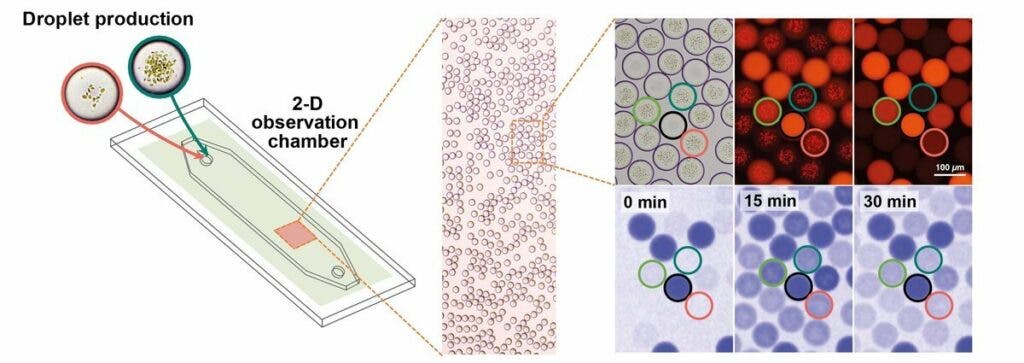New research is bringing us one step closer to artificial chloroplasts, which would be able to produce clean energy, fuel, and carbon compounds from sunlight and thin air.

Image credits Miller et al., (2020), Science.
If there’s one engine that keeps life as we know it going, it’s the chloroplast. They help plants generate organic compounds using CO2, nutrients, and sunlight, and plants feed everything else. They also produce the oxygen our cells use in respiration. So they supply the building blocks, fuel, and the gases needed to keep our cells alive.
Creating artificial chloroplasts could allow humanity to tap into this process for our own needs. It could allow us to produce energy, fuel, and organic substances from thin air. But we’ve had a hard time actually creating these artificial photosynthesis machines.
Synthetic biology and microfluidics
A team of researchers at the MaxSynBio network, part of the Max Plank Society, has successfully created a platform for the automated construction of cell-sized artificial chloroplasts, which are able to function just like the natural ones.
“Our work shows for the first time that you can realise alternative, autonomous photosynthetic systems at the micro-scale from individual parts and modules, allowing us to construct “alternative” biological solutions, which nature has not explored,” explains Tobias Erb, co-author of the paper .
“To our knowledge, it is the first demonstration of continuous, multi-step conversion of carbon dioxide into carbon compounds.”
The team used the CETCH (crotonylCoA/ethylmalonyl-CoA/hydroxybutyryl-CoA) cycle developed in 2016 by Tobias Erb’s lab at the Max Planck Institute for Terrestrial Biology in Marburg, Germany. This cycle mimics natural photosynthesis but relies on a series of natural and engineered enzymes to make it even more efficient than the one employed by plants. What they describe in this paper is the process through which they ‘grafted’ the CETCH cycle onto thylakoid membranes – the structures that convert light into energy-rich compounds in natural chloroplasts (isolated from spinach).
Synthetic biology was used to design and build the components needed to assemble these CETCH-thylakoid membrane couplings, and microfluidics to encapsulate them together in water-and-oil microdroplets. This last step follows the natural structure of cells (which have lipid membranes and watery interiors) and allowed for the creation of “hundreds to thousands of cell-sized compartments that can operate independently from each other,” Erb adds.
The team explains that past attempts have failed when trying to mix the CETCH cycle with the rest of the artificial chloroplast and that their success marks an important step towards harnessing photosynthesis for human use.
“This opens the way for the standardized mass production of catalytically active micro-reaction compartments – or “artificial cells” – for different biotechnological applications in the future,” he adds.
The paper “Light-powered CO2 fixation in a chloroplast mimic with natural and synthetic parts” has been published in the journal Science.









